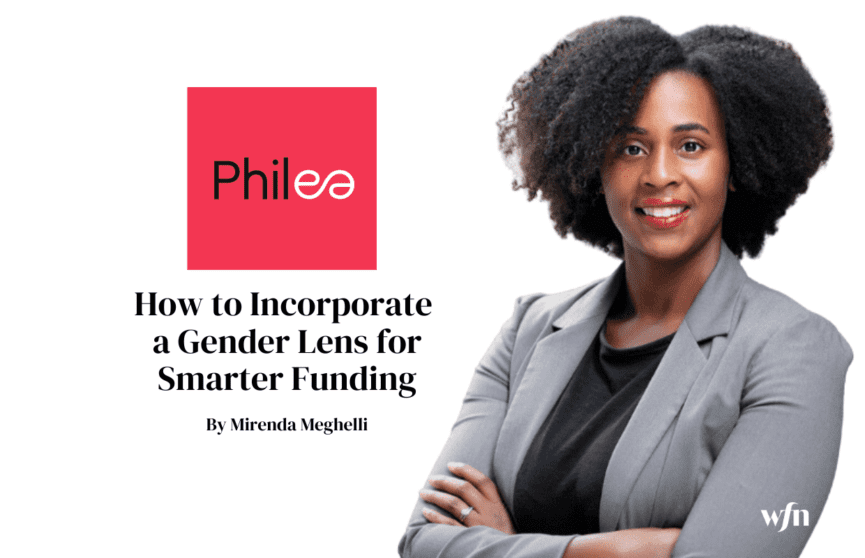Written by Mirenda Meghelli, Director of Policy and Programs for Women’s Funding Network. Published by Philea (Philanthropy Europe Association) on August 11, 2023.
With the fall of Dobbs in the summer of 2022, the Women’s Funding Network—the world’s largest philanthropic alliance for gender equity, which supports 120 women’s funds and foundations across 14 countries—knew this was a critical moment for philanthropic organisations to join forces to advance reproductive justice. In the ruling, the Supreme Court overturned Roe v. Wade, which had made the ability to access an abortion a Constitutional right. Now that determination is in the hands of each state. But this seismic step backwards isn’t just about reproductive rights—the right to an abortion is a civil rights issue, a public health issue, and an economic issue.
As part of our efforts to mobilise leaders in our community, we collaborated with partners including Groundswell Fund, Funders for Justice, Funders for Reproductive Equity, and the Ms. Foundation for Women to launch the “Time Is Now” pledge, calling for solidarity in the protection of abortion access and reproductive justice. The pledge included five immediate action items, from suggestions on where to give to have maximum impact to a call to truly listen to movement leadership—those who had been on the frontlines long before Dobbs—in order to ensure collaboration across strategies and issues. Ultimately, it was a successful rallying cry—with more than 150 organisations representing more than 1 billion in collective grantmaking power signing on in support.
The pledge is an excellent case study in how we can order our steps in the future when it comes to activating our collective power, especially as more basic human rights come under assault in the United States and the world. At WFN, our goal has always been to mobilise the broader giving community to adopt an intentional gender lens when it comes to the work we fund.
Why does this matter? When you understand that the pressing issues we face, from climate justice to economic mobility, are better served by addressing the gender paradigm then you’ll see just how effective this framing can be. A gender lens provides an opportunity to bring funders together across organisations and issue areas because it can provide a better view of the problem and, therefore, a better understanding of how to use philanthropic dollars to address problems that concern our organisations.
With climate change, for instance, research has shown that in order to solve for climate justice, we need to think about the unique implications of climate change and disaster on women. Women are disproportionately harmed by climate change, according to UN Women. As they report, “looking at climate change through the lens of intersectional feminism, the way in which various forms of inequality often operate together and exacerbate each other, it is clear that climate change risks are acute for indigenous and Afro-descendent women and girls, older women, LGBTIQ+ people, women and girls with disabilities, migrant women, and those living in rural, remote, conflict and disaster-prone areas.” Yet, for far too long, grantmakers haven’t considered these unique sets of obstacles as we fund work to save our planet. That should change.
The same holds true for addressing and funding solutions to reduce economic instability. If you’re trying to solve for economic instability, but you aren’t thinking about the wage gap or our country’s growing childcare crisis, then you’re not addressing the full scope of the problem. When women don’t have economic mobility, their families don’t have economic mobility. If women were paid on a par with their male counterparts for the same work, it would benefit our society on the whole by cutting our nation’s poverty rate in half, as well as inject $512.6 billion into the U.S. economy. And without affordable childcare, women workers, especially those earning a low wage, are often shut out of the workforce. They simply can’t afford to go to work or find adequate care to support the demanding schedules that often accompany low-wage work. This too affects all of us. Childcare is not just a family issue. To truly create solutions for economic mobility, the gender lens simply can’t be ignored.
Healthcare, more broadly, is yet another space where a gender lens can be beneficial for all, not just in the case of abortion. While our pledge focused on abortion access, in light of Dobbs, it also highlighted the need for broader support of reproductive justice. A narrow focus on abortion is problematic—championing bodily autonomy alongside racial and gender equity will be the way forward as it provides a more holistic perspective to the myriad healthcare challenges women face. A gender lens provides a deeper understanding of these issues and can be the foundation upon which we fund the right solutions. Afterall, in order to be an efficient grantmaker you want to move money in a way that has the greatest impact. We firmly believe that requires taking a full accounting of how women are impacted.
Mirenda Meghelli
Director of Policy and Programs
Women’s Funding Nework
